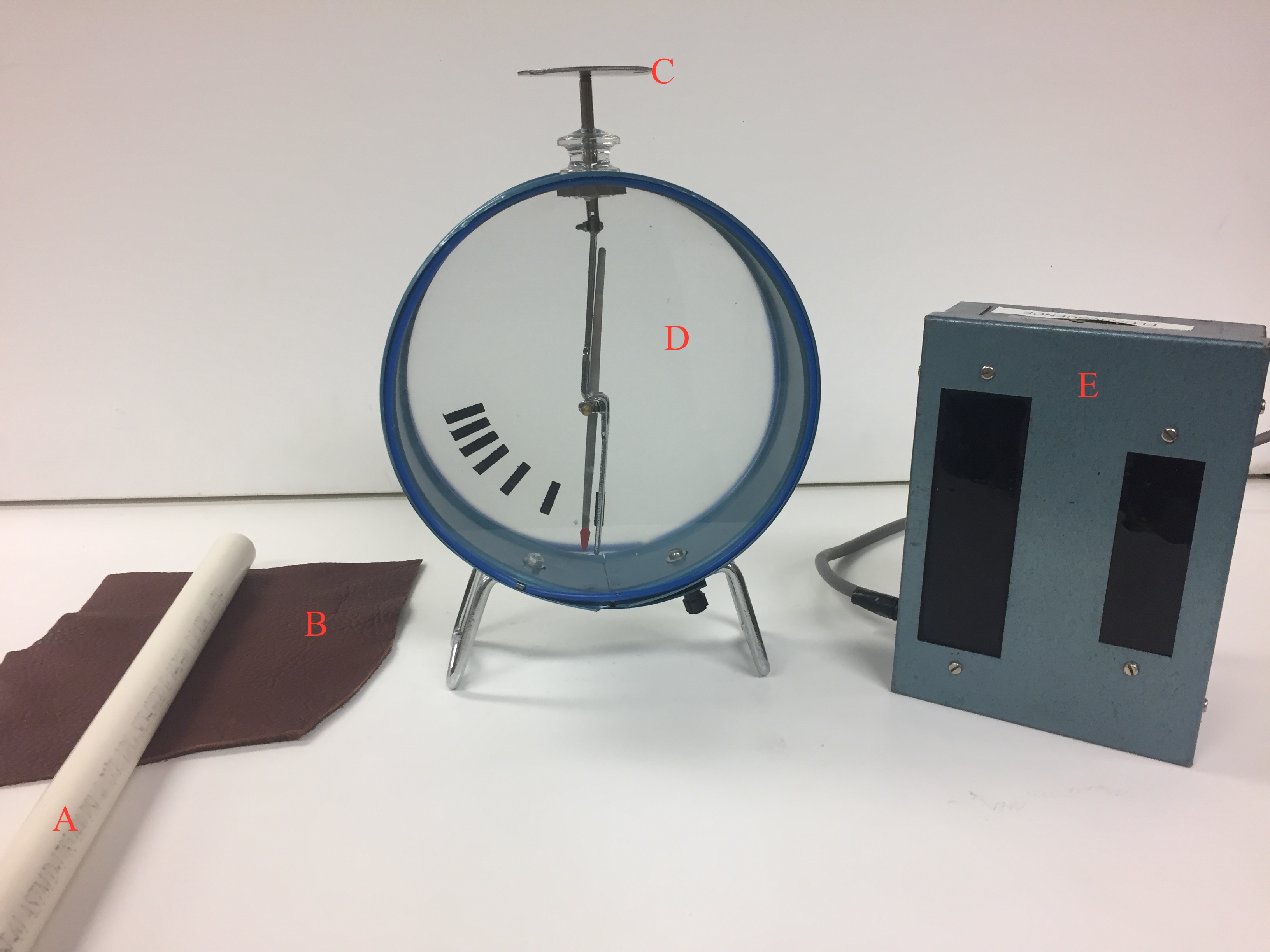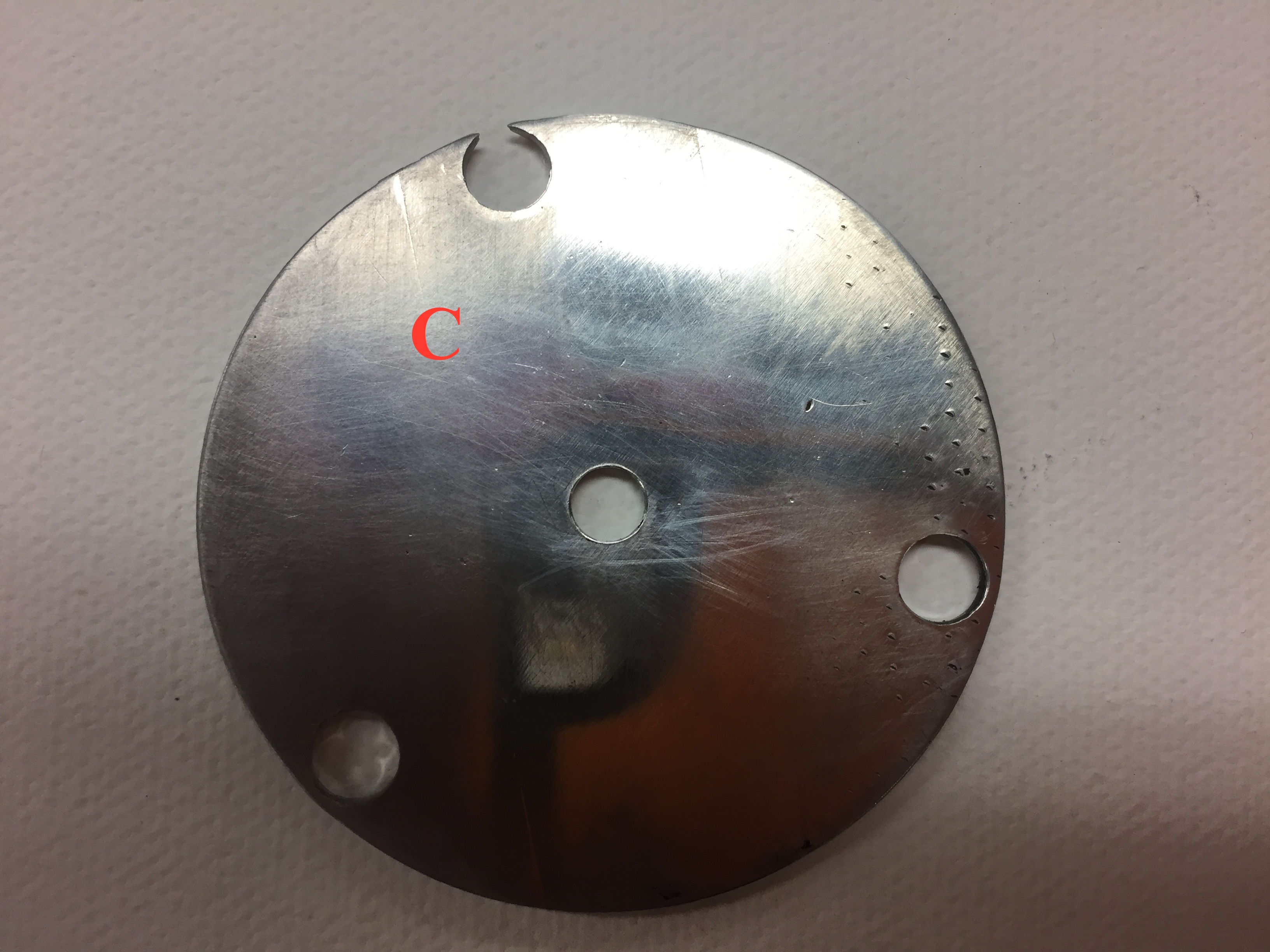

Equipment:
A. PVC pipe
B. Leather
C. Polished aluminum plate
D. Electroscope
E.UV lamp – shortwave illuminator should be used.
Demo:
- Unscrew the ball from the top of the electroscope and place the aluminum plate on the rod.
- Negatively charge the PVC rod by rubbing it with leather. Touch the plate with the rod. Do this until the electroscope shows enough charge(e.g. neddle is at a 45° angle from rest).
- The electroscope will not discharge from the white light in the room.
- Illuminate aluminum disc with UV lamp. Use the short wavelength mode. The electroscope should show a quick discharge.
Explanation:
Light can push electrons, freeing them from the surface of a solid. This process is called the photoelectric effect and a material that can exhibit this property is called photoemissive, and the ejected electrons are called photoelectrons; but there is nothing that would distinguish them from other electrons. In this demo we can see how the electrons leave the aluminum plate when the ultraviolet light ejects light with more photoelectrons. Most would predict that a more intense light would eject electrons with greater energy than a less intense beam no matter what the frequency. This was not the case, however. Red light does not eject electrons. Green light ejects photoelectrons. Blue light ejects electrons with more energy than green light. The energy (E) of a photon is equal to planck’s constant (h) times its frequency (f). f is also equal to the speed of light (c) over the wavelength (λ):
In this demo we can see how the electrons leave the aluminum plate when the ultraviolet light hits the plate. When the energy from the light hits the metal and the energy is higher than its work function (φ, the minimum energy needed to remove an electron from the surface), the electron will escape from the surface. Einstein used the law of conservation of energy to find that the maximum kinetic energy for an emitted electron is the energy minus the work function. Thus:
Notes:
- Make sure to polish the aluminum plate with sandpaper and then buff, before bringing the demo.
- Before performing this demonstration, use the heat gun to get rid of excess moisture on electroscope and parts.
Written by Nick McCabe